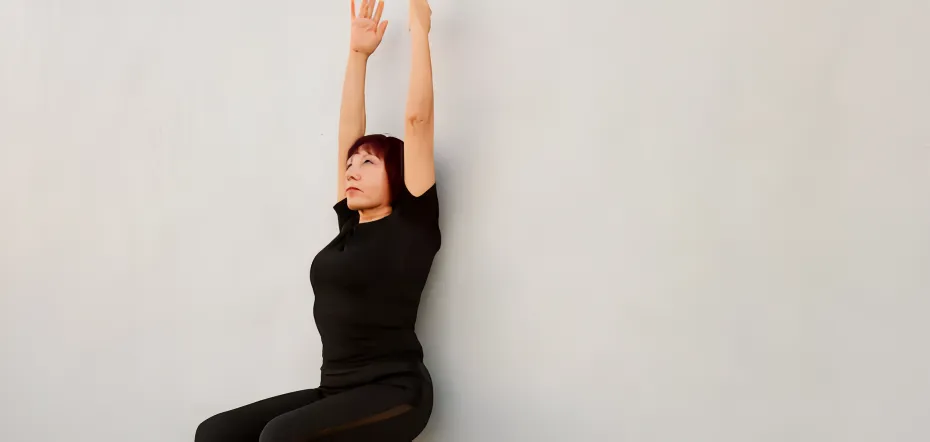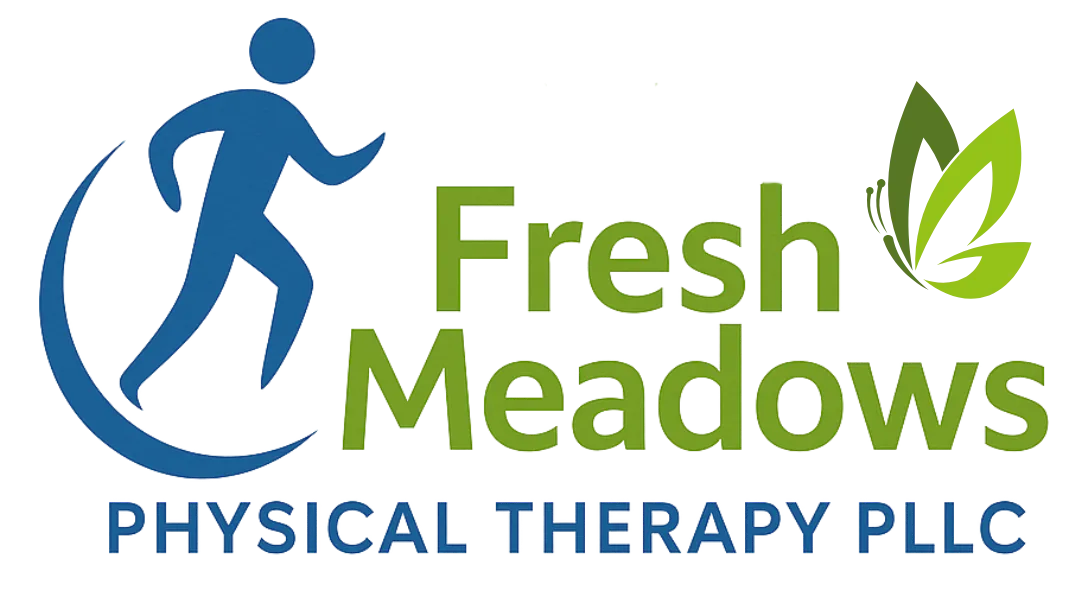Importance of Good Posture: 5 Easy Exercises You Can Do Today
Importance of Good Posture: 5 Easy Exercises You Can Do Today
Importance of Good Posture: 5 Easy Exercises You Can Do Today
June 13, 2025

Proper posture supports your health by minimizing neck and back issues, alleviating headaches, and lowering the chance of exercise-related injuries.

Achieving good posture can be challenging due to activities like extended computer use, slouching over devices, or carrying heavy items, which negatively affect both posture and health. Discover the significance of posture and try these five simple exercises to enhance yours.
Why Is Good Posture Important?
In our busy, technology-filled and sedentary lives, posture is often overlooked. Yet, poor posture can affect nearly every aspect of health and wellbeing. Let’s explore the advantages of maintaining good posture.
Less Discomfort
While occasional aches and pains are part of life, many can be minimized by keeping your body in correct alignment. Proper posture during activities reduces strain on joints and muscles, leading to less pain in stressed areas like the back, neck, and shoulders—sometimes offering immediate relief.
Enhanced Breathing
Adopting proper posture opens up your torso, allowing your lungs to expand fully for deeper and more effective breaths. This supports better physical and mental health, while slouching or poor posture restricts lung capacity, making optimal breathing harder.
Increased Confidence
How you carry yourself affects more than just your physical well-being. Standing tall with good posture conveys confidence and competence, leaving a positive impression on others while also enhancing your own self-assurance. This increased confidence can help you navigate work and personal relationships more successfully.
Proper Digestive Function
Your posture and stomach are more connected than you might think. Slouching can compress your stomach, pushing acid into the esophagus and throat. Additionally, compressed organs may function less effectively, resulting in issues like acid reflux and slower digestion, causing discomfort.
Build Strength And Steady Your Balance
Maintaining good posture helps build strong muscles and enhances balance. Many posture-focused exercises also strengthen the muscles that support body alignment, which can lower your risk of falling and improve your overall well-being.
5 Straightforward Exercises To Help You Achieve Better Posture.
To maximize the benefits of good posture, working with a qualified physical therapist is recommended. However, you can begin your journey to better health by practicing these five easy-to-learn exercises at home, which require only a few minutes and fit seamlessly into your daily routine.

Shoulder Blade Squeeze
Regularly practicing the shoulder blade squeeze several times a day can improve shoulder alignment and increase chest capacity. Here's how to perform the exercise:
Sit or stand with a straight posture.
Keep your arms relaxed at your sides.
Pull your shoulder blades backward and toward each other.
Hold the position for 5 to 10 seconds.
Repeat the movement.
Wall Angels
Wall angels are effective for building strength in the muscles that pull your shoulders back and for stretching the chest, back, and torso muscles. Here's how you can do this exercise:
Stand with your back pressed firmly against a wall.
Start by sliding your arms along the wall until they reach shoulder height.
Keep your palms facing outward as you raise your arms.
Gradually slide your arms upward until they are above your head.
Lower your arms back down to the starting position.
Complete 2–3 sets of 10–15 repetitions.
Cat-Cow Stretch
Wall angels improve shoulder strength and help stretch the muscles in your chest, back, and torso. Here's how to do the exercise:
Begin on all fours, placing your hands and knees on the ground.
Inhale as you arch your back downward.
Exhale while rounding your spine upward.
Continue the movement for 1–2 minutes.
Chin Tucks
Chin tucks are effective for aligning your head and neck with your spine and relieving neck pain associated with bad posture. Here's how to perform this exercise:
Sit or stand upright with a straight back.
Gently lower your chin toward your chest.
Keep your shoulders steady and avoid moving them during the exercise.
Hold the position for a few seconds, then release.
Perform 10–15 repetitions.
Hip Flexor Stretch
The hip flexor stretch is a great way to elongate hip flexor muscles and correct pelvic alignment. Here's how to perform this exercise:
Sit comfortably on the ground.
Stretch one leg straight in front of you.
Bend the opposite leg so the knee forms a 90-degree angle.
Gently lean your upper body forward while keeping your back straight.
Pause once you feel a stretch in your hip area.
Hold the stretch for 20–30 seconds, then switch sides.

Struggling with poor posture and discomfort? Fresh Meadows is here to help. Our caring and experienced physical therapists are dedicated to your recovery, offering personalized treatment plans designed to support real, lasting relief.
Request An Appointment
Please fill out this form and
we will contact you about scheduling.
Privacy Policy | Terms of Service
Importance of Good Posture: 5 Easy Exercises You Can Do Today
June 13, 2025

Proper posture supports your health by minimizing neck and back issues, alleviating headaches, and lowering the chance of exercise-related injuries.

Achieving good posture can be challenging due to activities like extended computer use, slouching over devices, or carrying heavy items, which negatively affect both posture and health. Discover the significance of posture and try these five simple exercises to enhance yours.
Why Is Good Posture Important?
In our busy, technology-filled and sedentary lives, posture is often overlooked. Yet, poor posture can affect nearly every aspect of health and wellbeing. Let’s explore the advantages of maintaining good posture.
Less Discomfort
While occasional aches and pains are part of life, many can be minimized by keeping your body in correct alignment. Proper posture during activities reduces strain on joints and muscles, leading to less pain in stressed areas like the back, neck, and shoulders—sometimes offering immediate relief.
Enhanced Breathing
Adopting proper posture opens up your torso, allowing your lungs to expand fully for deeper and more effective breaths. This supports better physical and mental health, while slouching or poor posture restricts lung capacity, making optimal breathing harder.
Increased Confidence
How you carry yourself affects more than just your physical well-being. Standing tall with good posture conveys confidence and competence, leaving a positive impression on others while also enhancing your own self-assurance. This increased confidence can help you navigate work and personal relationships more successfully.
Proper Digestive Function
Your posture and stomach are more connected than you might think. Slouching can compress your stomach, pushing acid into the esophagus and throat. Additionally, compressed organs may function less effectively, resulting in issues like acid reflux and slower digestion, causing discomfort.
Build Strength And Steady Your Balance
Maintaining good posture helps build strong muscles and enhances balance. Many posture-focused exercises also strengthen the muscles that support body alignment, which can lower your risk of falling and improve your overall well-being.
5 Straightforward Exercises To Help You Achieve Better Posture
To maximize the benefits of good posture, working with a qualified physical therapist is recommended. However, you can begin your journey to better health by practicing these five easy-to-learn exercises at home, which require only a few minutes and fit seamlessly into your daily routine.

Shoulder Blade Squeeze
Regularly practicing the shoulder blade squeeze several times a day can improve shoulder alignment and increase chest capacity. Here's how to perform the exercise:
Sit or stand with a straight posture.
Keep your arms relaxed at your sides.
Pull your shoulder blades backward and toward each other.
Hold the position for 5 to 10 seconds.
Repeat the movement.
Wall Angels
Wall angels are effective for building strength in the muscles that pull your shoulders back and for stretching the chest, back, and torso muscles. Here's how you can do this exercise:
Stand with your back pressed firmly against a wall.
Start by sliding your arms along the wall until they reach shoulder height.
Keep your palms facing outward as you raise your arms.
Gradually slide your arms upward until they are above your head.
Lower your arms back down to the starting position.
Complete 2–3 sets of 10–15 repetitions.
Cat-Cow Stretch
Wall angels improve shoulder strength and help stretch the muscles in your chest, back, and torso. Here's how to do the exercise:
Begin on all fours, placing your hands and knees on the ground.
Inhale as you arch your back downward.
Exhale while rounding your spine upward.
Continue the movement for 1–2 minutes.
Chin Tucks
Chin tucks are effective for aligning your head and neck with your spine and relieving neck pain associated with bad posture. Here's how to perform this exercise:
Sit or stand upright with a straight back.
Gently lower your chin toward your chest.
Keep your shoulders steady and avoid moving them during the exercise.
Hold the position for a few seconds, then release.
Perform 10–15 repetitions.
Hip Flexor Stretch
The hip flexor stretch is a great way to elongate hip flexor muscles and correct pelvic alignment. Here's how to perform this exercise:
Sit comfortably on the ground.
Stretch one leg straight in front of you.
Bend the opposite leg so the knee forms a 90-degree angle.
Gently lean your upper body forward while keeping your back straight.
Pause once you feel a stretch in your hip area.
Hold the stretch for 20–30 seconds, then switch sides.

Struggling with poor posture and discomfort? Fresh Meadows is here to help. Our caring and experienced physical therapists are dedicated to your recovery, offering personalized treatment plans designed to support real, lasting relief.
Request An Appointment
Please fill out this form and
we will contact you about scheduling.
Privacy Policy | Terms of Service


